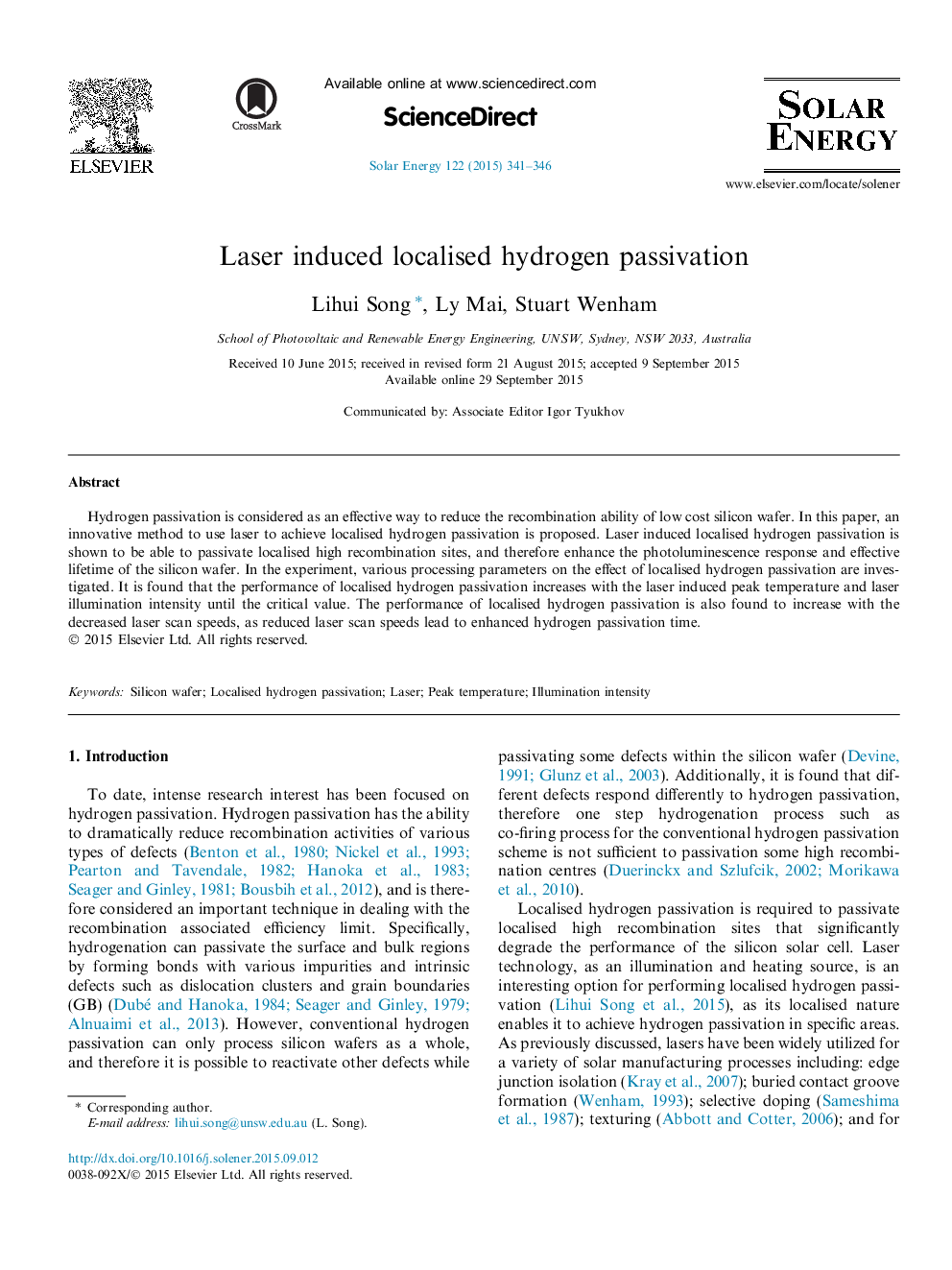| Article ID | Journal | Published Year | Pages | File Type |
|---|---|---|---|---|
| 1549588 | Solar Energy | 2015 | 6 Pages |
•This paper demonstrates that laser can induce localised hydrogen passivation.•This paper finds that high laser power density is good for localised hydrogen passivation until laser damage occurs.•This paper finds that low laser scan speed is good for hydrogen passivation.•This paper finds that high hot plate temperature is good for hydrogen passivation, however, the localised effect is not evident.•Localised hydrogen passivation can increase the PL response and lifetime of the laser processed area.
Hydrogen passivation is considered as an effective way to reduce the recombination ability of low cost silicon wafer. In this paper, an innovative method to use laser to achieve localised hydrogen passivation is proposed. Laser induced localised hydrogen passivation is shown to be able to passivate localised high recombination sites, and therefore enhance the photoluminescence response and effective lifetime of the silicon wafer. In the experiment, various processing parameters on the effect of localised hydrogen passivation are investigated. It is found that the performance of localised hydrogen passivation increases with the laser induced peak temperature and laser illumination intensity until the critical value. The performance of localised hydrogen passivation is also found to increase with the decreased laser scan speeds, as reduced laser scan speeds lead to enhanced hydrogen passivation time.
